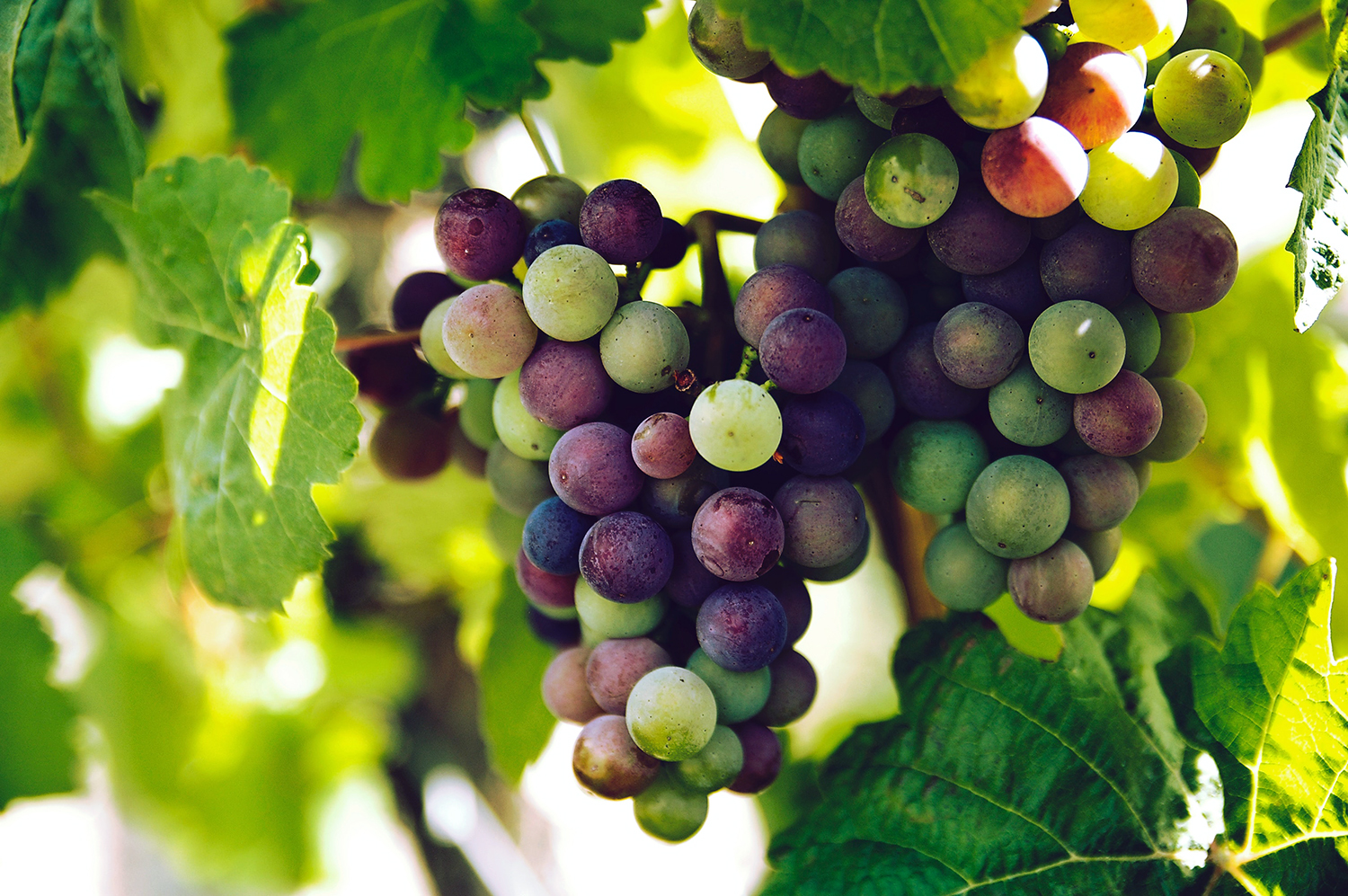Many people believe, understandably, that the white wine in their glass had to have come from white grapes. However, this may not always be the case. How is it possible that a red grape could create white wine? And why would a winemaker choose red grapes to make something other than red wine? The answers may surprise you and have you looking for some exciting new bottles.
The Color of Wine
To understand what gives wine its color, let’s take a quick look at the winemaking process from the grape to the glass. Plenty of care, attention, and hard work go into every bottle of wine — knowing how it is made can give you a deeper appreciation of each sip.
After harvesting grapes in the vineyard, either by hand or with machinery, the stems are removed and the grapes are crushed. With red wine, the skins and stems remain for fermentation, while white grapes lose these elements. This is a key factor in determining the color of a wine, and here’s the kicker: the color of wine comes from grapes’ skins, not the juice.
The juice of a grape itself is clear or white, regardless of the color of its skin. When skins remain in contact with the juice during the fermentation and pressing processes, they impart additional flavors and textures into the eventual wine.
So, when you take a red grape, remove its skins, and make wine from the remaining juice, you end up with white wine from red grapes. What are the potential benefits of this technique, though?
Added Structure and Complexity
For one of the most popular styles of red wine from white grapes, look to Champagne. To create the most famous bubbly in the world, winemakers use three primary varieties: Chardonnay, a white grape, along with Pinot Noir and Pinot Meunier — two red grapes.
When these two dark varieties are used to make white Champagne, it is known as “Blanc de Noir,” which translates literally to “white of black.” Black, in this case, indicates the dark red skin of the grapes. Pinot Noir and Pinot Meunier can impart more structure, density, floral elements, and red fruit flavors than you’d typically find from a Chardonnay-centric Champagne, creating a more complex taste profile. Don’t fear, though, Blanc de Noir Champagne is still incredibly accessible and pairs easily with a wide range of cuisines.
Next time you find yourself shopping for bubbly — Champagne or otherwise — check the label for a closer look into its grape breakdown. If it’s made of 100% Chardonnay, it may include “Blanc de Blancs” on the label to demonstrate that it is white wine made from white grapes. The “Blanc de Noirs” designation for Champagne indicates that the wine is made of 100% Pinot Noir, Pinot Meunier, or a blend of the two. American requirements are less strict, with some winemakers using the title for wines made with a blend of 75% red grapes and 25% white grapes.
Curious to see how they stack up against one another? Pour glasses of Blanc de Blancs and Blanc de Noirs and try a side-by-side tasting. A blind tasting with a little help from a friend can also enhance the experience.
WTSO features some of the best Blanc de Noirs bottlings in the world, including Andre Chemin’s Brut Tradition, made entirely of Pinot Noir. This Champagne received a 97 point score in the 2019 Decanter World Wine Review and remains a perennial favorite of WTSO members.
Availability varies for this bottle. If this wine is currently sold out, contact customer service, who will connect you with an in-house wine expert. They can help you find alternatives and put together a custom wine shipment.
OK, Well What About Rosé, Then?
Good question. The signature spectrum of colors for rosé wine — ranging from light, pale salmon to dark, rich red hues — also typically depend on skin contact from red grapes. As previously mentioned, the process of making white wine from red grapes includes complete removal of the skins, allowing for little-to-no contact with the juice itself.
With rosé, the amount of time the skins remain in contact with the juice will dictate its color. A shorter period leads to a fainter pink coloration, while longer contact with skins provides a more profound red intensity.
In some cases, winemakers blend red and white wines to create rosé. For example, rosé Champagne may integrate still Pinot Noir or Pinot Meunier into bubbly Chardonnay to create a pink color. Most rosé found around the world gets its color from skin contact, however.
Aimery’s Rosé Cremant de Limoux, available on WTSO, blends Pinot Noir into an otherwise dominant blend of Chardonnay and Chenin Blanc to result in a beautiful salmon pink color.
That Makes Sense. What About “Orange Wine?”
“Orange wine” has grown in popularity over the last decade or so, though winemakers in the country of Georgia have crafted this variety for thousands of years. In this case, white grapes are used to make white wine, while retaining the skin contact method of red wine. “Orange” refers to the color of the wine, which takes on a darker hue from the skins, rather than invoking notes of the citrus fruit.
Skin In The Game
Who knew the skins of grapes played such an important role in the winemaking process? Use this newfound information to guide your wine purchases — oftentimes, we’ll grab a bottle based on the producer, label, or region. Take a closer look at the details of the wine, including its color, grapes, and production to enrich your experience going forward.



